Runtimebroker was first distributed in Windows 8 and is a significant framework measure that keeps on filling a significant need on Windows 10 runtime brokers PCs. Like other important system processes like unsecapp.exe, the runtime broker execution process cannot be disabled.
System processes such as Runtimebrokers are usually hidden. So if they show up on your radar, there could be a problem. If you’re wondering, “What is a RuntimeBroker.exe ?” And since you don’t have the foggiest idea about the appropriate response, read on as we clarify what it very well might be, what is protected, and what to do on the runtime broker high cpu results or RAM usage on Windows 10.
And since you don’t know the answer, read on as we explain what it is, what is safe, and what to do if it results in Runtimebroker high cpu If you are running Task Manager on a Windows 8 computer, RuntimeBroker.exe is most likely running in the background. Is this safe? Is runtime broker virus?
In this article, we will take a closer look at what the Runtime Broker is and examine not only what it does, but also why it can affect your computer’s performance in several scenarios. Let’s get started!
Table of Contents
What is a runtime broker?
Runtime Broker is a basic program included in the Microsoft Windows operating system. It’s been around since the release of Windows 8 and continues to work with the current version.
Runtimebroker is a relatively small file that doesn’t take up a lot of disk space and usually doesn’t result in a runtime broker high cpu.
Its main task is to check permissions for applications that are part of the Universal Windows Platform (UWP) – formerly known as Applications from the Windows Store. Regardless of whether it is a computer, smartphone or tablet, Runtime Broker checks app permissions for tips and notifications.
Therefore, you can see the execution process every time you run the UWP program in the Task Manager.
What is a Runtimebroker in the Task Manager?
Runtimebroker in a task manager should not use more than a few megabytes of RAM, but more is used due to faulty applications or antivirus software. If this exceeds this memory usage, check out our short but effective guide on how to fix this problem.
What is runtimebroker.exe?
Fortunately the Runtime Broker cycle is made by Microsoft and is a fundamental cycle in Windows 8 and Windows 10. It is not a Runtimebroker virus or other malware.
If you have just logged into Windows 8 or Windows 10 and haven’t run any applications yet, RuntimeBroker.exe runtime broker may not work yet. RuntimeBroker.exe is triggered by a universal application. When the process is complete, all open applications will immediately close completely.
So what is it doing? Well, Runtime Broker can check if an app declares all permissions (like access to your photos) and notifies the user whether it is allowed or not. In particular, it will be interesting to see how it works with regard to hardware access, i.e. The ability of the application to take pictures from the webcam. Think of this as an intermediary between your application and your privacy / security.
A speedy look at the string cycle shows that the Microsoft meaning of Runtimebroker.exe is essential for the Windows Partial Trust Process. You can find most of the related registry entries and processes themselves in the following places:
- HKEY_LOCAL_MACHINE \ SOFTWARE \ Microsoft \ WindowsRuntime
- C: \ Windows \ System32 \ RuntimeBroker.exe
Is runtimebroker.exe a virus?
No, the runtime process is not malware or a runtime broker virus trying to get into your computer. Given that it uses an EXE file (runtimebroker.exe), some malware can be disguised as a runtime intermediate process.
You can check the validity by checking the file location. If it’s in the System32 folder on the Windows installation tool, that’s okay. If not, you can take advantage of several third-party antivirus programs.
What is Runtime Broker Windows 10?
All system processes are comprehensive, such as ntoskrnl.exe, which is so important that it is called the System in Runtimebroker task manager. Although the Runtimebroker process (runtimebroker.exe) is a little less important, it plays an important role in the way Windows protects your system.
The Runtimebroker windows 10 process screens the consents of the applications you introduce and run on the Microsoft Store. This can be a background permission to access your local files, save them on your webcam or monitor your location. This type of data is sensitive, so it makes sense that you (and Microsoft) want to limit access to it.
What is the RuntimeBroker.exe Runtimebroker error message?
Runtime errors are Windows errors that occur at runtime. The duration is quite understandable; This means that this EXE error is triggered when you try to load RuntimeBroker.exe runtime broker, or when Windows starts up, or in some cases it is already running. Runtime errors are the most common form of EXE errors found in Windows.
In most cases, a RuntimeBroker.exe run-time error that occurs during program execution will cause the program to terminate abnormally.
Most of these RuntimeBroker.exe error messages mean that Windows failed to find this file at startup, or the file has become corrupted, resulting in the startup process being interrupted prematurely. Generally speaking, Windows won’t start without solving this error.
Some of the most common errors in RuntimeBroker.exe include:
- RuntimeBroker.exe is a bad image.
- RuntimeBroker.exe application error.
- RuntimeBroker.exe could not be found.
- RuntimeBroker.exe could not be installed.
- RuntimeBroker.exe could not start. Class not registered.
- RuntimeBroker.exe could not start.
- RuntimeBroker.exe could not be initialized properly.
- RuntimeBroker.exe has encountered a problem and needs to close. We’re sorry for the inconvenience.
- RuntimeBroker.exe is not a valid Win32 application.
- RuntimeBroker.exe is not working.
- I can’t find RuntimeBroker.exe.
- Error starting the program: RuntimeBroker.exe.
- Invalid application path: RuntimeBroker.exe.
The program cannot start because RuntimeBroker.exe is missing from your computer. Try reinstalling the program to solve this problem. So make absolutely sure that your antivirus is up to date and scanned regularly.
Finding the source of the RuntimeBroker.exe error is the key to resolving this error properly. Although most EXE errors affecting RuntimeBroker.exe will occur during startup, they will occasionally occur during operation using the Microsoft® Windows® Operating System.
This could be the result of poor programming on behalf of Microsoft Corporation, conflicts with other software or third-party plug-ins, or faulty and obsolete hardware.
This type of RuntimeBroker.exe error can also appear if it was accidentally moved, deleted, or damaged by a malware infection. So make absolutely sure that your antivirus is up to date and scanned regularly.
Why Do You Need Runtimebrokers?
This somehow makes Runtimebroker our security. Even if you install an app from the Microsoft Store, there’s a chance the app will ask for permissions that don’t need to work. Runtime brokers display a pop-up asking you to enable / disable apps with this specific permission.
You have much-needed control over which applications can access which parts of your computer. You don’t want a deceptive malware app that requires permission to your hard drive or webcam, do you? You need RuntimeBroker.exe to keep your privacy safe and protected.
What does a Runtimebroker monitor?
The purpose of Runtimebroker is to monitor and manage all permissions granted to run UWP applications. If you’ve ever opened the Windows Store or launched a UWP app from the built-in tile in the Start menu, that app is most likely using Runtimebroker to check permissions and proper functionality.
As a result, the Runtimebroker application usually runs without a processor and small memory (only ten megabytes). However, in some scenarios, Runtimebrokers can experience significant spikes in CPU and / or memory usage due to a UWP application that is being monitored or has just started.
When should we worry about Runtimebrokers?
Microsoft states that RuntimeBroker.exe should not use more than a few MB of memory. RAM and CPU usage can spike temporarily when you open a UWP app, but only temporarily, and that’s fine.
Press Ctrl + Shift + Esc to open the runtime broker task manager and check the status on the Process tab. If this takes up a lot of storage space, there could be several reasons.
Malware or viruses can act as runtime intermediaries, leaving the system antivirus alone. One of the UWP apps you have installed may not work properly, causing Runtime Broker to use up more RAM or CPU as the case.
This could be a one-time memory leak but has been fixed by Microsoft with an update. You need to worry if you think you are facing one of these situations, but we have a few solutions to help you resolve it.
Why is it using memory?
When Runtime Broker is idle, it maintains a very low memory profile, which usually takes up around 20-40 MB. If you run universal applications, you will likely find that the memory usage has increased to 500-700 MB.
Running additional universal applications should not cause Runtime Broker to use additional memory. If you close all open general purpose applications, Runtime Broker’s memory usage will drop to 20 to 40 MB.
Why is the CPU slowing down?
When Runtime Broker runs in the background, Runtime Broker usually uses 0% of your CPU. When starting universal applications, the usage should be temporarily increased to 25-30% and then decreased.
This is normal behavior. If you find that Runtime Broker consistently consumes 30% or more of your CPU, has higher than expected memory usage, or is increasing usage even if you don’t have universal apps, there are several possible explanations.
If you recently upgraded to runtime broker windows 10, you may have noticed that Windows likes to show you random tips via notifications.
For some reason this activity behaves like a universal application and involves a runtime broker process. You can fix this by turning off tips. Go to Settings> System> Notifications and Actions and uncheck “Get tips, stunts and proposals when utilizing Windows”.
You might also have a faulty app that’s causing Runtime Broker to use up more resources than it should. In this case, you need to isolate the application that is causing the problem. Ensure the application is refreshed to the most recent rendition.
In the event that that doesn’t help, uninstall and afterward reinstall the application. If that doesn’t work, let the developer know of the problem (and in the meantime, uninstall it if you don’t have to).
Is Runtime Broker safe and can it be disabled?
Runtime Broker (runtimebroker.exe) is a basic system process that protects your computer from fake Microsoft Store applications. It is completely safe to run and plays an important role in the various precautions Microsoft is taking to protect your Windows operating system from major threats such as malware infection.
Unlike other basic system processes like csrss.exe, stopping the broker execution process will not damage your computer, but Windows will automatically restart after a few seconds. It can’t be disabled permanently, but you shouldn’t disable it either.
As mentioned earlier, Runtime Broker is secure and limits access to your files and settings. The only exception to this rule is that your computer is running malware which replaces the actual execution process when you are working with a fake version. Although we emphasize that this is impossible, there is something that cannot be ruled out.
If you are concerned about this, the following steps can help you to check if a system process like runtime broker.exe is legitimate.
How to fix runtime broker high cpu high cpu usage error in Windows 10
If you find high CPU usage by Runtime Broker or high memory usage by Runtime Broker then follow the fix given below. Such odd CPU usage can affect CPU performance and also shorten its lifespan. Follow the various methods to fix various errors in Runtime broker.exe Windows 10.
Problem 1: runtime broker high CPU , hard drive, memory and memory usage of operating system in Windows 10
Disable runtime broker Method 1 – Uncheck “Get Windows Tips, Tricks and Advice”
Disabling this option results in an immediate decrease in CPU usage by Run time Brokers. This is because this option keeps track of all your activities while you are using the computer so you end up using a runtime broker high CPU.
STEP 1 – Open Settings by pressing Windows and me at the same time.
STEP 2 – Click on System Preferences.

STEP 3 – Select Notifications and Actions. Scroll down and turn off Get Tips, Tricks and Suggestions while using the Windows option.

Disabling this option will likely fix your problem. If not, try the following methods.
Disable runtime broker Method 2 – Disable background apps
Maybe the reason Runtime Broker uses high CPU usage is because you have so much background that the application runs on your computer. Disabling this process will definitely reduce the CPU usage of the runtime broker.
Maybe the reason Runtime Broker uses high CPU usage is because you have so much background that the application runs on your computer. Disabling this process will definitely reduce the CPU usage of the runtime broker.
Step 1: Open Settings by pressing Windows and me at the same time.
Step 2: Click on Privacy Settings.
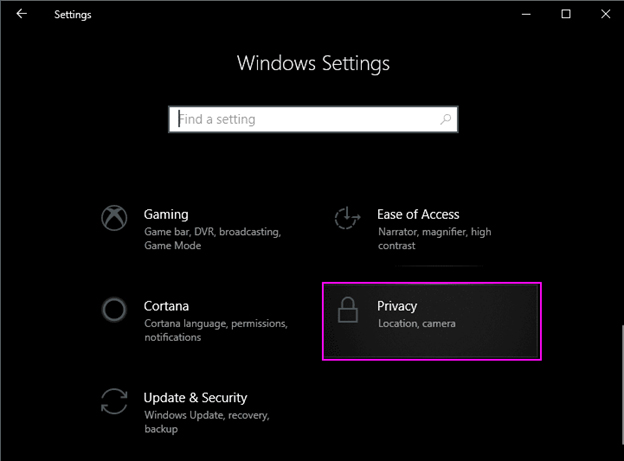
Disable runtime broker Step 3: Scroll down on the left panel and select Background App.

Disable runtime broker step 4: Disable all applications (you can exit the application where you get direct notifications such as Skype).
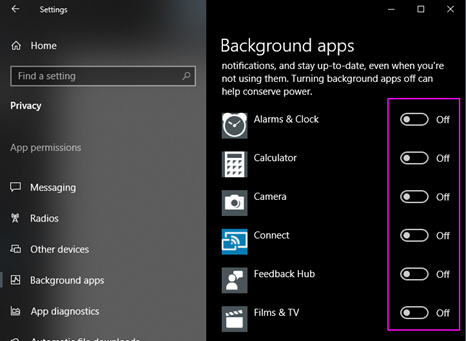
This will definitely reduce your overall CPU usage and Runtime Broker hard drive usage. You can also use this method if your computer has less RAM and hangs frequently.
Disable runtime broker Method 3: Check your antivirus
Antivirus software can cause high CPU Runtime Broker usage and other problems. To solve this problem, it is recommended to disable some antivirus features and see if it works for you.
However, if that doesn’t work for you, then you should disable or remove antivirus problems. If disabling or removing antivirus worked for you, we recommend that you switch to a different antivirus program.
Disable runtime broker Method 4: Stop the runtime proxy process
Sometimes stopping the Runtime Broker process by runtime broker task manager solves the high memory usage problem of Runtime Broker.
You can turn runtime broker off via the task manager. I have discussed this above. You can view the steps from there.
Well, it’s not a permanent solution, but it’s worth trying Runtime Broker.exe with high CPU usage, too much RAM, and high memory usage.
Disable runtime broker Method 5: Change the registry
If the fix above doesn’t work to resolve Runtime Broker high disk usage issues, there are a few registry changes you can make.
This is easy, but make sure you do it with care:
Press Windows + R> type regedit> Enter

Then go to HKEY_LOCAL_MACHINESYSTEMCurrentControlSetServicesTimeBroker.
And change Start = dword: 0000005 to dword: 5000004.
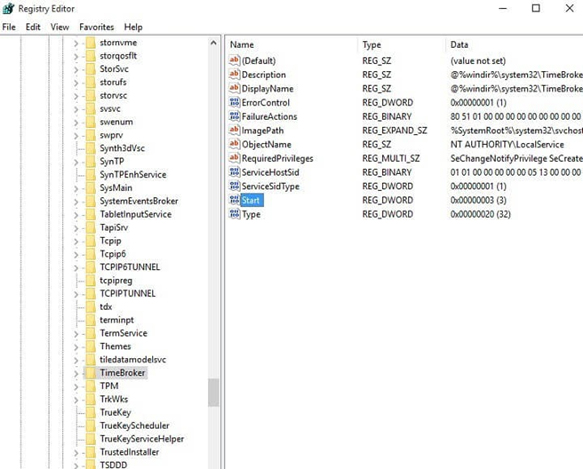
This affects part of Cortana’s memory, but it can help you solve the high CPU usage issue.
Method 6: Change Windows Slideshow Lock Screen Background
According to some users, Runtime Broker’s high memory issue was solved by changing the slideshow background on the lock screen.
If you use this, turn it off and switch to photography. To do this, follow the steps below:
Go to Settings> app and switch to the Personalization tab.
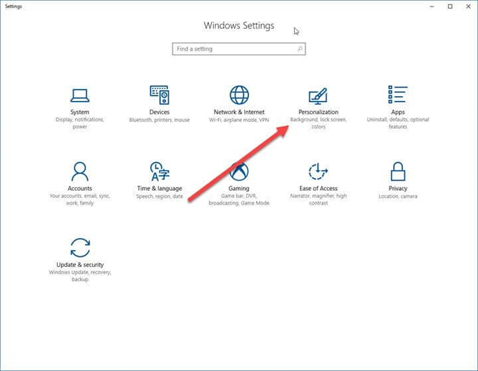
Go to the Lock Screen tab on the left panel and set the wallpaper to Picture
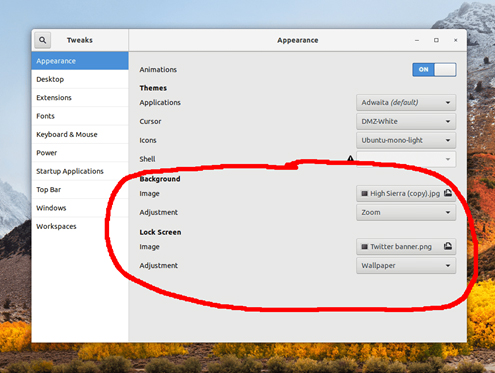
Now check whether the problem with Runtime Broker is resolved or not.
What is a System Guard Runtime Monitor?
System Guard Runtime Monitor Broker (Sgrm Broker.exe) is a service created by Microsoft that is built into the main operating system Windows 10 version 1709 and is part of Windows Defender System Guard.
If you can’t install the feature update to Windows 10 version 1709, this article can help. You will be provided with several useful methods to fix this problem.
The System Guard Runtime Monitor Broker service is responsible for monitoring and verifying the integrity of the Windows platform. The service monitors three main areas:
- Protect and maintain system integrity at startup.
- Protect and maintain system integrity after startup.
- Ensure that system integrity is strictly guaranteed through local and remote authentication.
Multiple runtime brokers?
Sometimes, when you open Task Manager on your PC you can see multiple Runtime Broker processes running. This may look odd since normally each assignment is shown just a single time.
You may even wonder if multiple Runtime Broker processes are caused by a virus or some sort of a system error. Below, you will find the reasons behind this situation and which steps to take in a case there is something wrong after all.
Rather than following all the bit by bit guidelines, you can run the PC Repair instrument by Outbyte. It will diagnose your PC system and clean up any junk files in a few simple steps. You can use PC Repair with the latest Windows 10 version, as well as with the older ones starting from Windows 8 and up.
Is it good to see multiple runtime broker processes while working in Task Manager?
This question is very popular among computer users. There is a lot of discussion on the internet about multiple runtime broker processes.
Obviously, this might seem suspicious. In any case, by and large, there isn’t anything to stress over. The logic behind this is quite simple: for every UPW application you run, Runtime Broker must be running at the same time. The active processes for any application are a list.
You can check this yourself by running one of the Runtime Broker processes in the Task Manager list. Most likely, one of the UWP applications will no longer work at the same time.
However, there are situations where looking at multiple Runtime Broker tasks indicates that there really is a problem with your computer. The same thing can happen if multiple Yourphone.exe or HxOutlook.exe processes are running in the background.
This could mean that something is wrong with the process itself or that you have malware disguised as a Windows file on your computer.
Can one virus cause multiple runtime broker processes
While this isn’t common, you might want to make sure that one of the Runtime Broker.exe files is actually a malware program. Here’s what you can do to verify that this is a legitimate process:
- Press Ctrl + Shift + Esc on your console to open the Task Manager.
- Find the Runtimebroker line on the Processes tab. Right click on it and select Open File Location.
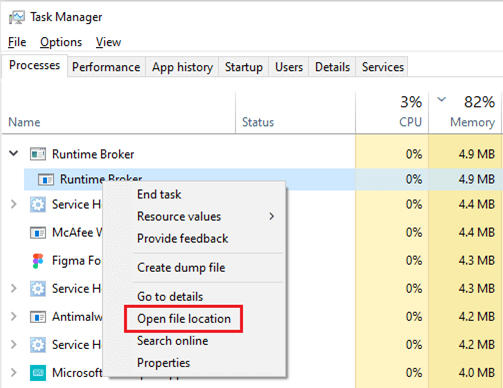
Since Runtimebroker is part of the Windows system, its files must exist in the root system folder. The way to get there usually looks like this:
C: \ Windows \ System32 \ Runtime Broker.exe

Anything outside of the System32 folder should be a problem. If this is the case, you may want to run your antivirus and make sure it detects and removes suspicious files. Also, don’t usually install third-party applications from websites that you can’t trust as this could cause malware to run on your computer.
Conclusion
RuntimeBroker.exe Runtimebroker is a Microsoft secure process included with Windows 8 and Windows 10 that helps with app permissions. It has a small system area with less than 3000 KB of RAM.
You won’t see any click performance from this process running in the background. This process should be left alone unless you’re looking for a quick way to kill all your apps.
